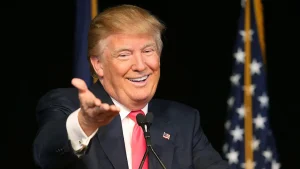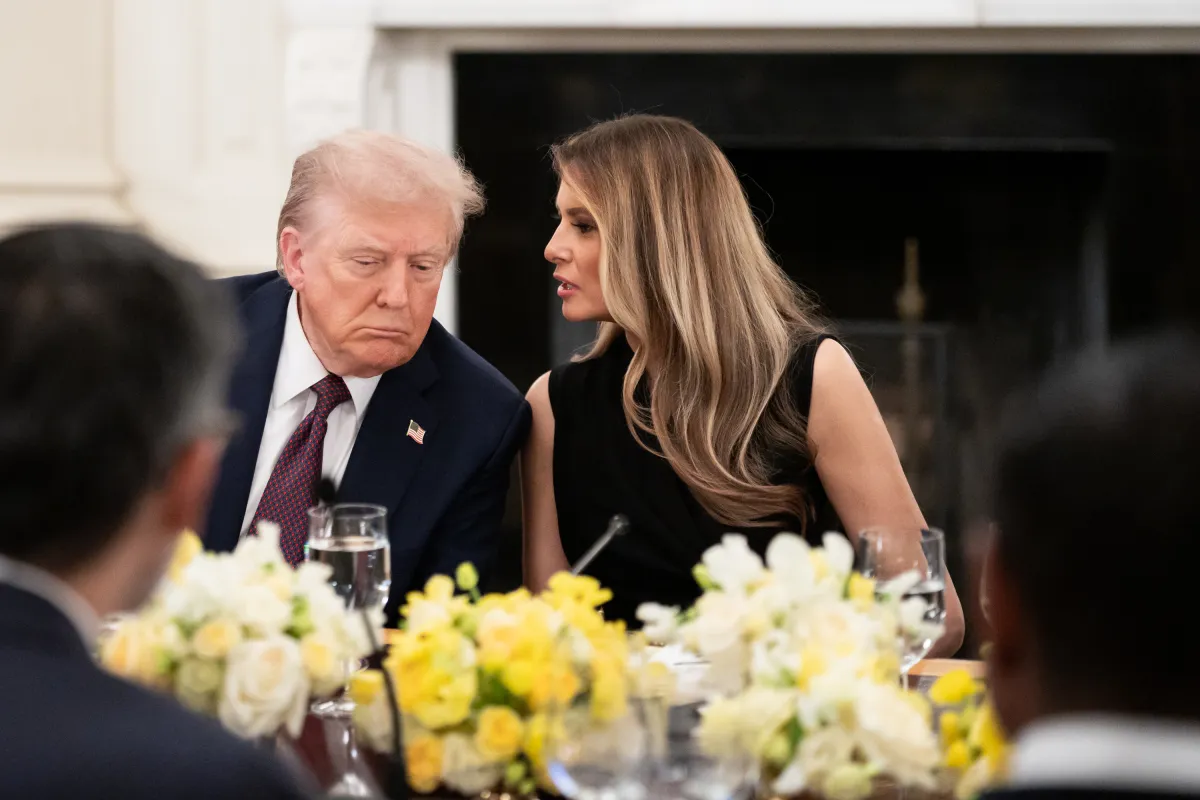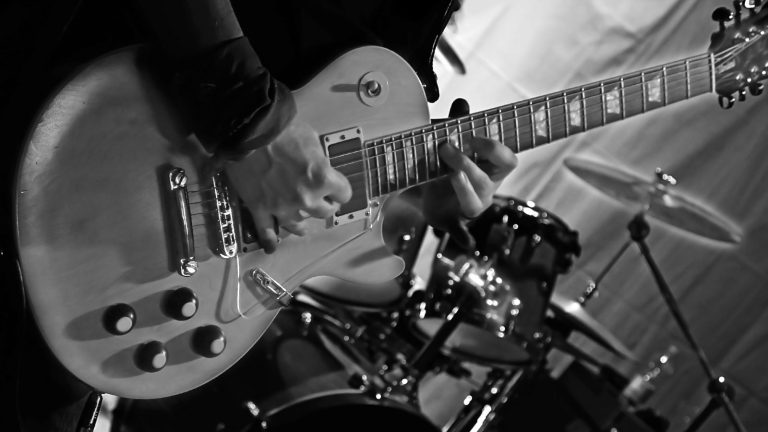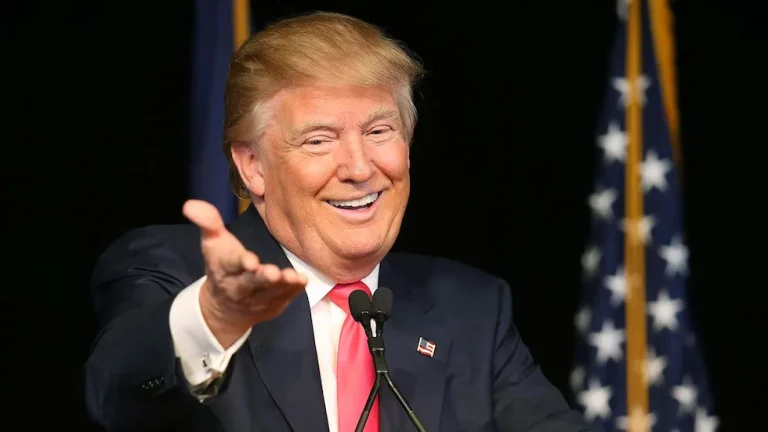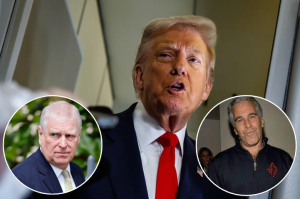Donald Trump’s personal habits have long been a source of fascination for the public, and his sleep patterns are no exception. During his time as President of the United States, Trump often boasted about getting by on just four to five hours of sleep per night, a schedule that many world leaders would likely find exhausting but which he maintained throughout his first term. Yet while his sleep—or lack thereof—has been discussed in public circles, recent insights from former First Lady Melania Trump have offered a glimpse into just how unusual the president’s bedtime routine really is.
Melania Trump, who often remained in the background during her husband’s political career, revealed these details during the campaign trail last year. Appearing on Fox News’ The Five to promote her book, Melania: A Memoir, the former First Lady provided an account of the president’s nighttime habits that left audiences both bemused and speechless. While many Americans are familiar with Trump’s distinctive approach to leadership, few would have expected this peek into his private routine.
“He doesn’t sleep much,” Melania explained, offering the first hint at her husband’s nighttime habits. She added a clarification—“He does, of course”—but the admission still suggested a highly irregular sleep schedule. Sleep, as any physician or wellness expert would stress, is a critical component of health, yet Trump’s ability to function on minimal rest has long been part of his public persona. During the early years of his presidency, he often mentioned in interviews that his schedule allowed him to work longer hours, maintain constant vigilance, and stay ahead of his political rivals.
The conversation quickly took a more personal turn. Fox News panelist Greg Gutfeld asked Melania if Trump “wears pajamas” to bed. Her answer was a firm “no,” prompting a mixture of shock and curiosity from the audience. When pressed further on what exactly he does wear while sleeping, Melania responded with a silent zipping gesture across her lips, signaling that some details were simply off-limits. The exchange, while brief, highlighted the tension between public curiosity and personal privacy—yet it was hard for viewers not to be fascinated by the intimate glimpse into the president’s nightly routine.
While the details shared by Melania were sparse, they fit within a larger pattern of Trump’s unusual sleep habits, which have been documented by reporters, aides, and political insiders. CNN’s Kaitlan Collins, a former Chief White House Correspondent, recently discussed the challenges of traveling with the president during long-haul flights aboard Air Force One. According to Collins, Trump’s tendency to stay awake while everyone else sleeps made trips exhausting for staffers and reporters alike.
Collins shared her observations on Jason Tartick’s Trading Secrets podcast, explaining how Trump’s unusual sleep schedule complicated even routine travel. “He doesn’t sleep on these trips, and like, you’re going to Asia or something, and that’s kind of the only time you’re going to sleep before you go on this trip, but Trump is just always up and talking,” she recounted. According to Collins, the president would sometimes wake staff members in the middle of the night simply to discuss his upcoming meetings or to respond to something in the media.
Collins and her colleague Kevin Liptak wrote that Trump “will summon sleeping staffers to his office at moments the rest of the plane is dark, impatient to discuss his upcoming meetings or devise a response to something he saw in the media.” This kind of behavior, while unusual, underscores a broader narrative about Trump’s approach to work and leadership: constant engagement, unrelenting energy, and a willingness to disrupt conventional schedules in pursuit of his goals.
Despite the unconventional routine, Trump’s sleep habits were not necessarily atypical for a high-powered individual. Many executives and politicians function on less sleep than the general population. However, the combination of public attention, political responsibility, and the intense scrutiny of daily life in the White House made Trump’s habits particularly noteworthy. What made Melania’s revelation stand out was the intimacy of the insight—allowing the public a rare glimpse into the private life of a sitting president, a perspective that few people have had access to in history.
For Melania, sharing these details was part of a broader effort to humanize her husband while simultaneously offering a candid account of her life as First Lady. Her memoir provided numerous insights into the challenges, responsibilities, and sometimes surreal moments of life in the White House. From adjusting to the intense public spotlight to navigating the daily logistics of presidential life, her reflections revealed a side of Trump rarely seen in official communications or media coverage.
One aspect of Trump’s sleep pattern, as reported by both Melania and White House insiders, is its minimalistic nature. Trump reportedly manages on just a few hours of sleep each night, which he has publicly described as essential to maintaining his high-energy lifestyle. While many health experts caution that consistent sleep deprivation can lead to significant cognitive and physical challenges, Trump’s ability to operate on limited rest became part of his broader brand: a tireless leader constantly in motion.
Traveling with Trump, as Collins described, is particularly challenging due to this sleep schedule. The long flights across multiple time zones often coincide with the president staying fully awake while others attempt to rest. Trump’s insistence on engaging with staff, making decisions, and monitoring media coverage at all hours illustrates a work ethic that is both relentless and, at times, disruptive. For aides and journalists, this behavior creates a unique environment—one where conventional expectations of rest and downtime are suspended.
While Melania’s interview was brief on details, it opened the door to a larger discussion about the intersection of leadership, personal habits, and public perception. The public’s fascination with the private lives of political leaders is not new, but it is amplified in the age of social media, where even the smallest revelations can spark viral discussion. Melania’s comments—coupled with previous reporting on Trump’s sleep patterns—highlight the unusual dynamics of life inside the White House under his administration.
It is also notable that Trump himself has publicly referenced his sleep habits on multiple occasions. During interviews and rallies, he has boasted about functioning on minimal rest, framing it as a competitive advantage. While critics often question the sustainability and health implications of such a schedule, the president has maintained that it allows him to remain engaged, responsive, and effective. His sleep habits, therefore, are not just a personal quirk—they are an integral part of his self-presentation as a high-energy, hands-on leader.
Melania’s revelation about the president not wearing pajamas, though light-hearted in tone, adds a humanizing and humorous dimension to the story. It emphasizes the private quirks that define a person’s life beyond the public persona. While the public may never need to know these details, they serve to demystify the figure of the president, providing insight into the realities of living and working alongside a world leader.
This intimate perspective also underscores the unique pressures faced by presidential families. Life inside the White House is not just a matter of public appearances and policy decisions—it is a constant negotiation of personal routines, family dynamics, and security protocols. Melania’s reflections remind audiences that the First Lady observes these routines from a vantage point few others share, giving her commentary a weight and authenticity that is hard to replicate elsewhere.
The combination of Melania’s account and insider reporting from journalists like Collins paints a broader picture of Trump’s unconventional approach to leadership. From the campaign trail to Air Force One, his minimal sleep, constant engagement, and unusual routines reflect a style of governance that is both unorthodox and intensely demanding. Staffers, aides, and journalists have had to adapt to this environment, often sacrificing their own rest to meet the president’s expectations.
Yet, despite the challenges, these anecdotes provide a fascinating lens into the human side of the presidency. They reveal that leadership is not just about public appearances, executive orders, and policy decisions—it is also shaped by personal habits, routines, and idiosyncrasies. For historians, political analysts, and the public, these insights contribute to a richer understanding of what it means to live and work in the White House under a president as unique and polarizing as Donald Trump.
Melania’s remarks, though brief and selective, also illustrate the delicate balance of public disclosure. As a former First Lady, she has the authority to share personal anecdotes while maintaining boundaries. Her zipping gesture in response to questions about what her husband wears to bed highlights the limits of public curiosity and the respect for private life that even the most public figures are entitled to.
In conclusion, Melania Trump’s revelations about Donald Trump’s unusual bedtime routine offer a rare and candid look into the personal life of one of the world’s most scrutinized leaders. From minimal sleep to private habits and the challenges faced by those traveling and working with him, these insights shed light on the human dimensions of leadership. They remind us that even powerful figures have routines, quirks, and personal habits that influence how they operate—and that understanding these aspects can offer valuable context for evaluating their public performance.
While the details may leave some audiences bemused—or even speechless—they underscore a broader truth about leadership in the modern era: it is as much shaped by personal discipline, eccentricities, and human routines as it is by policy decisions, political strategy, or public perception. Melania’s glimpse into this intimate side of the presidency adds depth to the public understanding of Donald Trump, highlighting how the personal and political are often inseparably intertwined in the life of a U.S. president.
From Air Force One to the White House residence, Trump’s unusual nighttime habits, as described by both Melania and journalists, offer a window into the relentless pace and intensity of presidential life. For the public, these stories provide both entertainment and insight, reminding us that the world of global leadership is as complex and unpredictable as the individuals who inhabit it.
Ultimately, Melania’s comments are more than just a quirky anecdote—they are a reminder of the human realities behind political power, the demands placed on those who serve in the highest office, and the unique challenges faced by families living under the weight of global scrutiny. In the end, what we learn about Trump’s sleep patterns is a small but telling detail about the larger machinery of governance, leadership, and life in the White House.

Emily Johnson is a critically acclaimed essayist and novelist known for her thought-provoking works centered on feminism, women’s rights, and modern relationships. Born and raised in Portland, Oregon, Emily grew up with a deep love of books, often spending her afternoons at her local library. She went on to study literature and gender studies at UCLA, where she became deeply involved in activism and began publishing essays in campus journals. Her debut essay collection, Voices Unbound, struck a chord with readers nationwide for its fearless exploration of gender dynamics, identity, and the challenges faced by women in contemporary society. Emily later transitioned into fiction, writing novels that balance compelling storytelling with social commentary. Her protagonists are often strong, multidimensional women navigating love, ambition, and the struggles of everyday life, making her a favorite among readers who crave authentic, relatable narratives. Critics praise her ability to merge personal intimacy with universal themes. Off the page, Emily is an advocate for women in publishing, leading workshops that encourage young female writers to embrace their voices. She lives in Seattle with her partner and two rescue cats, where she continues to write, teach, and inspire a new generation of storytellers.


